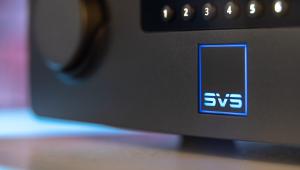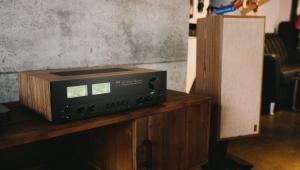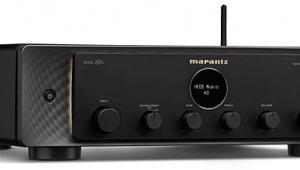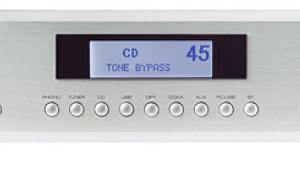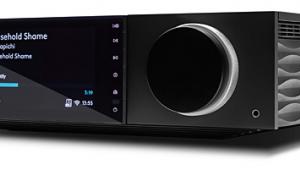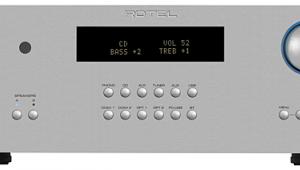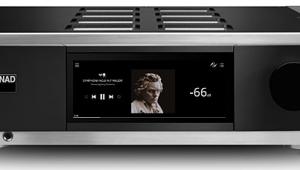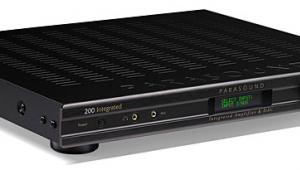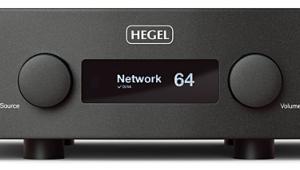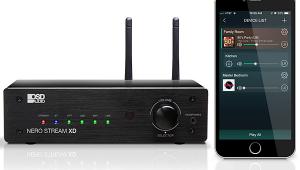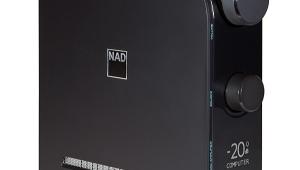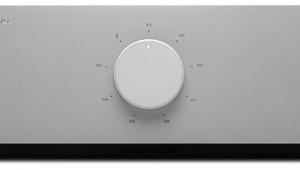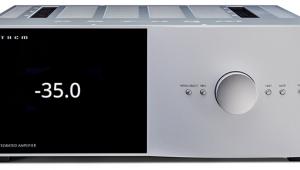I use the Linn App with my Teac NT-505 as it's the only compatible desktop app I've found but it needs work imho.
Linn Majik DSM Streaming Integrated Amplifier Review
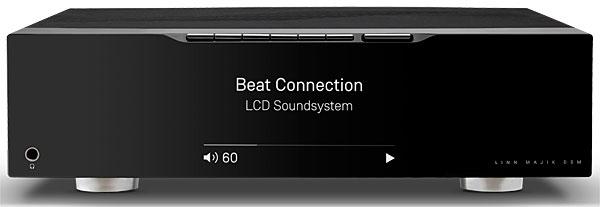
AT A GLANCE
Plus
Great sound quality
Multiple HDMI inputs (w/ARC)
Effective Space Optimisation room correction
Built-in phono stage
Minus
Dealer setup recommended
Small speaker terminals
THE VERDICT
Linn's all-in-one wireless streamer/amplifier/DAC offers impressive sound, sleek looks, and plentiful connectivity options.
According to the corporate lore of Scottish audio manufacturer Linn, in 1973 a newly married engineer named Ivor Tiefenbrun went shopping at his wife's direction to buy home furnishings. To his wife's chagrin, the story goes, he instead returned with a stereo system. After setting it up, Ivor was disappointed with the sound, but soon discovered that moving the turntable from his listening room into an adjoining room improved the system's performance since the speakers' output no longer interacted with the turntable and distorted the audio signal. This eventually led Ivor to design the now-famous Sondek LP12 transcription turntable, which is resistant to room-based acoustical feedback.
Almost fifty years later, the company is now led by Ivor's son, Gilad, and known not only for turntables and other analog audio components, but also for digital components and speakers. Linn's latest product, the entry-level Majik DSM, is the most recent refresh of its Majik DSI, a unit that was first introduced in 2009.
While Linn calls the Majik DSM ($3,835) a network music player, it could be more accurately described as a stereo integrated amplifier with a built-in digital-to- analog converter (DAC) and wired/ wireless streaming capability. Aimed at freshly minted hi-fi enthusiasts or veteran ones seeking to add high-quality sound to a bedroom, office, or other small-ish space, the Majik DSM also features a headphone output and built-in phono stage for vinyl playback. Just add a set of speakers, and you are good to go.

Along with wireless and wired streaming, the Majik DSM's analog and digital inputs allow it to accommodate a wide range of sources, including Blu-ray players, video streamers, satellite and cable boxes, gaming consoles, CD players, and computers. Notably for a product in this category, the Majik DSM features multiple HDMI 2.0 ports with 4K/HDR10 video pass-through, including an output with Audio Return Channel (ARC), a feature that lets you route audio back over an HDMI link from a connected TV (stereo-only in this case, of course).
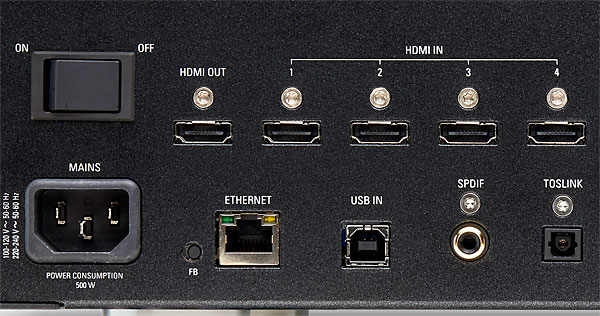
Features
There are two key feature updates the new Majik DSM brings that improve on its predecessor: a USB type-B input for a direct computer connection and the aforementioned wireless streaming. According to Linn, other upgrades from the older model include improvements made to the DSM's display, amplifier, volume control, processing platform, DAC chips, and head- phone output. The new Majik DSM also features Bluetooth and is Roon Tested.
Linn's class-D amplifier is rated at 50 watts per channel into 8 ohms and 100 watts into 4 ohms. It features the company's Dynamik power supply, and its DAC chips are derived from the ones used in Linn's flagship Katalyst DAC. These are capable of passing up to 24-bit/192kHz PCM signals through each digital input and DSD up to 5.6448MHz (DSD128) over a network-streamed source (but not the USB or optical/coaxial digital inputs). The Majik DSM's upsampling circuitry, low-jitter word clock, and low-noise voltage reference also all derive from the Katalyst DAC architecture.
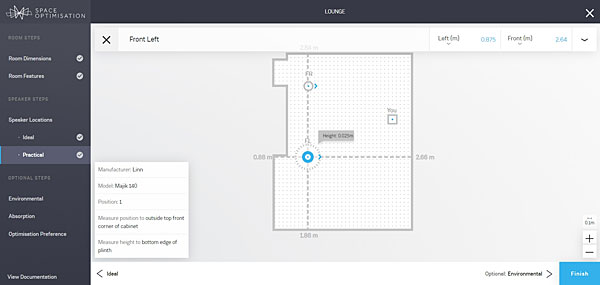
Linn's Space Optimisation, a form of digital signal processing (DSP) that eschews microphone-based room measurements in favor of acoustic modeling, is another key Majik DSM feature. (I'll just refer to it as "Space," which stands for "Speaker Placement and Custom Environment.) Operating specifically on the frequency range below 80Hz, Space creates a digital file that captures your speakers' physical characteristics, their positions in the room and that of the listener, and the room's acoustic design (e.g., its dimensions, door and window placements, and material composition). Using this file, Space identifies overloaded low frequencies and reduces their intensities in amounts that can also be adjusted by the user. Linn maintains a database that presently contains the information required by Space for over 500 speaker models. If a particular speaker is not contained in the database, it can be added.
The elegant, minimalist Majik DSM is clad in a black aluminum chassis. Its front panel is part of a two-inch-deep black high-gloss fascia into which side, top, and bottom panels are joined. A high-resolution, monochromatic TFT LCD display shows menu, volume level/mute, and track playback information (play, stop, pause, and buffering), and it slowly fades away when the unit is turned off. Album art is not featured in the display as Linn feels the listener will be sitting a good distance from the DSM and art is otherwise available via one of its phone/tablet apps (discussed below).
Other front-panel features include a 1/4-inch headphone output and six "smart" buttons that can be mapped in the setup menu to provide quick access to local sources (e.g., a turntable or Blu-ray player) and Internet-based ones (a favorite podcast, streamed radio station, or Spotify playlist). Alongside these is a Control button that's used for volume adjustment and menu navigation.
The Majik DSM's rear panel contains four HDMI 2.0 inputs and one HDMI ARC output, one each optical and coaxial digital inputs, a USB type-B port, and a stereo analog RCA input. A stereo analog RCA output lets you connect the Linn to an external amplifier for use as a preamplifier/streamer and can also be configured as a moving magnet phono input (not an afterthought, the Majik DSM's built-in phono stage is based on Linn's $3,570 Urika II standalone phono stage). Conveniently, the coaxial digital input can be configured as an output if needed. Rounding out our back panel tour is a LAN (Ethernet) port for a hardwired network streaming connection, banana/ spade speaker binding posts, a master on/off switch, and an IEC power connector.
The Majik DSM comes with a fairly standard issue, but decent, wand-type remote control. It can also be operated using the Linn Kazoo (Windows, Android, and iOS) or Linn (iOS) apps, all of which display the front-panel smart button controls. The Majik DSM's selection of natively supported apps includes Tidal, Qobuz, AirPlay, TuneIn, and Calm Radio. The Linn app also features a universal search tool that retrieves results across subscribed streaming services and stored music located on a user's home network.
Setup
Since I'm accustomed to lugging around heavy components, I found removing the featherweight (nine-pound) Majik DSM from its box and placing it on my bedroom credenza akin to the proverbial cool ocean breeze on a hot summer's day. The DSM isn't massively overbuilt, but it is nicely put together. I couldn't find one ill-fitting join.
Getting the Linn up and running, at least initially, entailed merely attaching the power cord, establishing a network connection, connecting the speakers, and making cable connections. During startup, a rainbow of colored lights subtly pulsates under the Majik DSM, turning solid blue (or one of six other selectable colors) when it's fully operational.
- Log in or register to post comments



